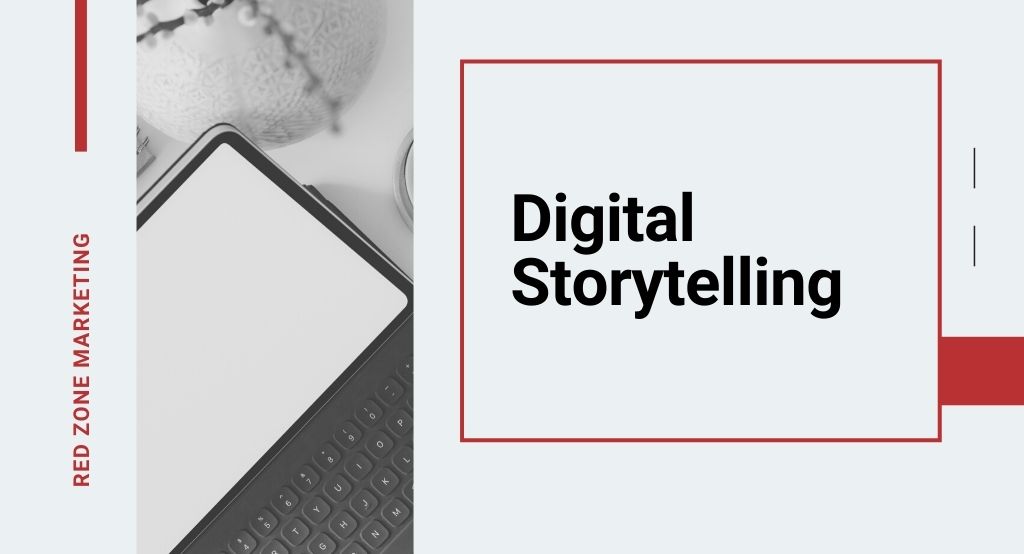Digital Storytelling uses multimedia tools to bring stories or narratives to life. Digital stories are versatile and can cover a wide variety of topics. You may create them to explain a concept, to educate in an interactive way, or even to recap an event. Digital stories usually are videos that include music, other audio, images, and video clips with text overlay (or captions) that come together to tell the story.
Like with any marketing project, you’ll want to begin with the end in mind by answering the following questions:
- Goal/ Purpose: What do you hope to accomplish by sharing this story?
- Audience: How will you be sure you’re reaching your target audience?
- Video Topic: What will be the focus of the story?
- Key Takeaways: What will the key takeaways be?
- Call-to-Action: What do you want the viewer to do once they’ve watched the video?
Timing
Keep in mind, digital stories are usually short—anywhere between thirty seconds and two minutes long. In order to fit each of the above elements into this truncated time space, you’ll need to be clear and succinct in your messaging. This is where choosing the right graphics, images, and video clips will help to get your story across as effectively as possible.
Script Writing and Storyboarding
Once you have answered the above questions, the next step is to write a script and create a storyboard. Writing your script out on paper will often direct the number and types of images you’ll want to include in your storyboard, so it’s a good idea to start here. Then, practice recording your voiceover. Once the voiceover is recorded, you can go back in and mark the time intervals when your video should change slides or cue in other images or audio.
Now you are ready to bring your voice to life through storyboarding. Storyboarding helps you plan out how the story will unfold; it is also helpful in uncovering gaps where information may be unclear or highlighting superfluous information that can be edited out.
We recommend planning your digital storyboard out in blocks. This helps you align who or what is on the screen with the appropriate audio. You don’t want your market slide to show up when your audio is talking about something completely unrelated. This will lead to a disjointed and confusing narrative (and likely a frustrated viewer).
Example: Here is an example of digital storytelling that I just created relating to the last blog I wrote on “How to Get The Most Out of A Virtual Conference.”
And, it is filled with text, video clips and music only and is available to create for free using sources like https://www.wibbitz.com.
Why Choose Digital Storytelling?
Digital storytelling is an engaging way to share information that allows you to showcase your creativity, catch your audience’s attention, and mix up your media offerings. Digital stories can make otherwise dull topics more interesting, complicated topics more digestible, and personal stories more relatable. And because videos engage multiple senses at once, viewers retain 95% more of a message when they watch it in a video as compared to only 10% when read in text.
But retention isn’t the only benefit. According to Biteable.com:
- 53% of marketers say that video helps them raise awareness.
- 49% say that video helps them engage their audience.
- 52% of marketers say that video helps them build trust with potential customers.
What’s holding you back? If you are an advisor struggling to make these types of meaningful and engaging connections with potential clients, video could be just the ticket for you. Quite frankly, I have yet to run into an advisor using video marketing that regrets it. With a little practice, you too can master the digital story and incorporate the many benefits into your firm’s marketing strategy.




What do you charge to assist in creating a simple 1 or 2 minute video?
Hi Janet – I have sent you and email. Thanks for reaching out!